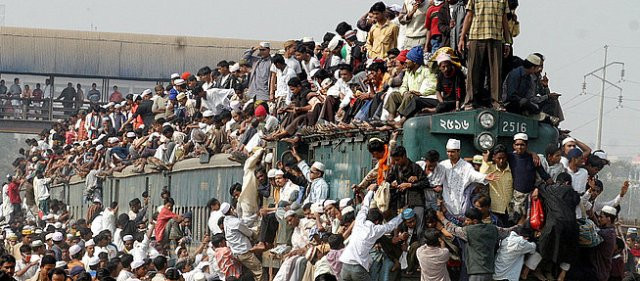Sceptics may call it statistical trickery, but economic data confirms that global poverty has indeed been falling for the last three decades. According to the Poverty Reduction and Equity report of the World Bank, which was updated in April, the percentage of people living in the developing world on less than $1.25 a day (in purchasing power parity terms) was 52.2 per cent back in 1981.
The figure dropped to just 20.6% in 2010. In other words, 1.2 billion people were impoverished in 2010 in the developing world as opposed to 1.9 billion in 1981.
However, far more people would have been lifted out of poverty during the same period had the population in developing countries grown at a slower rate.
In a fascinating take on global poverty, political scientist Fareed Zakaria recently stated that while India has successfully brought down the number of its impoverished people as a percentage of its total population from 60% in 1981 to 33% in 2010, the absolute number of Indians living in poverty is still around 400 million — only 29 million less than the 1981 figure, despite giant strides against poverty.
The UNDP estimates that 21 per cent of Pakistanis lived on less than $1.25 a day in 2012. While the figure for 1981 is not available, the online database of the World Bank says that 23% of the Pakistani population lived on less than $1.25 a day in 2005.
There can be a host of reasons why Pakistan hasn’t been particularly successful in combating poverty. But one reason is obvious: a steady population growth rate has ensured that while opportunities of upward social mobility let some people pull out of poverty, many others were born into it, largely offsetting the effects of the former.
The world population was 5.5 billion in 1993, which increased to 6.9 billion in 2011, reflecting an annualised rise of 1.2% over the 18-year period.
However, Pakistan’s population rose from 121 million in 1993 to 176 million in 2011, which translates into an annualised growth rate of 2.1%.
A young population is certainly an asset for a country if it is healthy, educated and productive in the economic sense. A largely illiterate population with extremist tendencies, however, is nothing but a recipe for economic as well as social disaster.
Read more by Kazim here.
Poverty and population growth
The UNDP estimates that 21 per cent of Pakistanis lived on less than $1.25 a day in 2012.


COMMENTS
Comments are moderated and generally will be posted if they are on-topic and not abusive.
For more information, please see our Comments FAQ